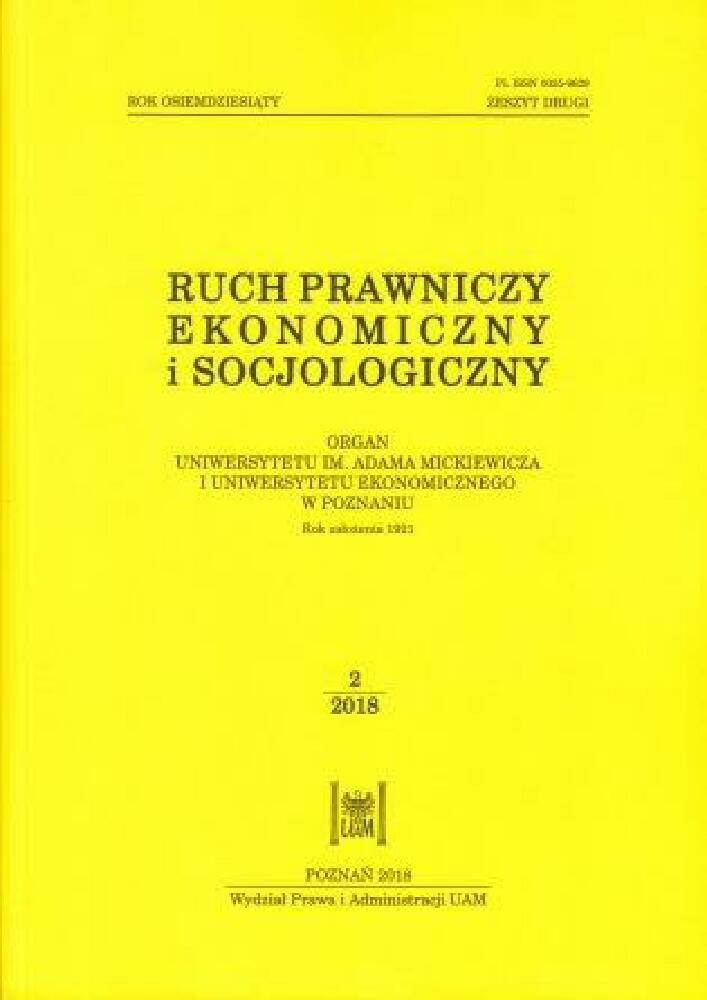Abstrakt
Wskutek rozwoju technologicznego i pojawienia się nowych koncepcji teoretycznych funkcjonowania funduszy inwestycyjnych wyłoniła się nowa kategoria funduszy określanych jako smart beta. Fundamentem ich funkcjonowania jest budowa portfela inwestycyjnego replikującego specjalnie opracowany indeks, którego konstrukcja ma zapewnić wyższą efektywność inwestycji niż ta wynikająca z inwestycji typowo pasywnej. Fundusze smart beta mają łączyć zdolność generowania ponadprzeciętnych stóp zwrotu z przejrzystą strukturą i niskimi opłatami za zarządzanie, stanowią więc bardzo interesującą hybrydę klasycznych funduszy zarządzanych aktywnie i pasywnie. Zainteresowanie badaczy i inwestorów ograniczało się do głównie do Stanów Zjednoczonych. W przypadku rynku polskiego fundusze smart beta wciąż pozostają koncepcją szerzej nieznaną, co stało się przesłanką dla upowszechnienia wiedzy o nich w polskim piśmiennictwie. Część pierwsza artykułu przedstawia teoretyczne fundamenty powstania funduszy smart beta jako konsekwencji długofalowej ewolucji w zarządzaniu portfelem inwestycyjnym. Następnie zaprezentowana została ogólna idea funkcjonowania funduszy smart beta wraz z nakreśleniem ich miejsca w strukturze segmentu rynku finansowego, jakim są instytucje wspólnego inwestowania. Artykuł zamyka pogłębiony przegląd kluczowych aspektów technicznych związanych z budową efektywnie działającej strategii wykorzystywanych przez fundusze smart beta, przygotowany na podstawie studiów literaturowych.
Bibliografia
Assness, C.S., Friedman J.A., Krail R.J., Liew J.M. (2000), Style timing: value versus growth, The Journal of Portfolio Management 26: 50–60.
Bailey, D.H. (2014), Pseudo-mathematics and financial charlatanism, American Mathematical Society 18.
Barosso, P., Santa-Clara, P. (2014), Momentum has its moments, Journal of Financial Economics 24.
Berk, J.B. (1995), A critique of size-related anomalies, Review of Financial Studies 8: 275–286.
Blitz, D., Van Vliet, P. (2010), Fundamental indexation: rebalancing assumptions and performance, The Journal of Index Investing 6.
Carhart, M.M. (1997), On persistence in mutual fund performance, Journal of Finance 52.
Cochrane, J.H. (2011), Presidential address: discount rates, Journal of Finance 66: 1047–1088.
DeMiguel, V.L., Garlappi, L. (2006), The moneyball of quality investing, Research Affiliates 12.
Dimson, E. i Hanke, B. (2004), The expected illiquidity premium: evidence from equity index-linked bonds, Review of Finance 8.
Fama E.F, French K.R. (1992), The cross-section of expected stock returns, Journal of Finance 47.
Frazzini, A., Pedersen L.H. (2004), Betting against beta, Journal of Financial Economics 111.
Harvey, C.R., Liu. Y, Zhu, H. (2015), Cross-section of expected returns, Journal of Financial Markets 44.
Hsu, J., Kalesnik, V. (2014), Finding smart beta in the factor zoo, Research Affiliates 11.
Hsu, J., Kalesnik V., Viswanathan, V. (2015), A framework for assessing factors ad implementing smart beta strategies, Research Affiliates 16.
Kalesnik V., Kose E. (2014), The moneyball of quality investing, Research Affiliates 13.
Markowitz, H. (1952), Portfolio selection, Journal of Finance 7.
Novy-Marx, R., Velikov, M. (2014), A taxonomy of anomalies and their trading costs, National Bureau of Economic Research 24.
Pastor, L. Stambaugh R.F. (2001), Liquidity risk and expected stock returns, National Bureau of Economic Research 8.
Pukthuanthong, K., Roll, R. (2014), A protocol for factor identification, Social Science Working Paper (1431).
Sharpe, W.F. (1964), Capital asset prices: a theory market equilibrium under conditions of risk, Journal of Finance 19.
Shumway, T., Warther, V.A. (1999), The delisting bias in CRSPs Nasdaq Data and its implication for size effect, Journal of Finance 54.
Licencja
Prawa autorskie (c) 2018 WPiA UAM

Utwór dostępny jest na licencji Creative Commons Uznanie autorstwa – Użycie niekomercyjne – Bez utworów zależnych 4.0 Międzynarodowe.




